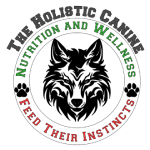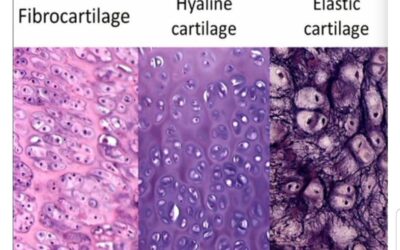MicroRNA & Pet Nutrition: How Food Choices Shape Your Pet’s Genes and Longevity
Food is Not Simply Nutrition. It is also Information!
The single greatest disservice to our pets was the invention of commercial pet food and the demolition of their ancestral roots. Following at a close second was the increased belief in the need for unnecessary conventional veterinary practices and intervention along with the creation and extensive distribution of chemical “preventatives.” It is no wonder that disease runs rampant among pets or why canine and feline genetics have deteriorated exponentially. Too many beloved pets are dying of disease before they even reach their senior years. Moreover, it is easily observed that pets are rapidly aging. How utterly sad it is to look into hazy and cloudy eyes; or to watch a middle-aged pet stiff and struggling to stand up due to damaged and painful joints; or to see the greying muzzle of a mere six year old; or to smell the stench of periodontal disease that began at the age of two and has now resulted in missing teeth already at the age of seven; or to feel utter pity for the pet that looks like a log of sausage due to their obesity, barely able to walk five feet without panting; or to recoil at the stink of yeasty or rotting ears, skin, and paws; or to stroke the fur of a pet and feel greasy and lumpy skin; or to experience the emotions of sympathy for the enormous percentage of seniors suffering from debilitating chronic disease and disorders. So widespread are the signs of rapid aging and health decline. Should we not be questioning why more pet parents are not putting a stop to this widespread, yet preventable epidemic among dogs and cats?
Preventing degeneration, rapid aging, and chronic disease in pets starts with learning what choices are available and thus making health-promoting decisions. By offering a species-appropriate ancestral prey-based diet and avoiding all unnecessary conventional veterinary treatments, practices, and chemical preventatives, pets can and do live a much healthier, happier, and longer life. While avoiding unnecessary and dangerous veterinary intervention is as simple as choosing not to, feeding a species-appropriate ancestral prey-based diet requires the willingness and motivation to consistently provide your pet with the best nutrition plan possible over the course of their life. This begins with education in this key and critical health strategy. Food must beget life, not disease and death.
Why Food Choice Matters
Food is far more than simply a source of energy and nutrient building blocks. This ancient and outdated ideology is reminiscent of the mechanistic Cartesian-Newtonian “atomism” paradigm. Food is not simply a source of potential energy and small material components that we all know to be “calories” and “macro and micronutrients.” Food goes far beyond physical matter. Food is information. It is the carrier of biological information that bodily cells are dependent upon for health and longevity. The source of this information is microRNAs that are found in all fresh foods. MicroRNA is responsible for gene expression, more specifically turning gene expression on and off. This has profound implications on the health and longevity of our pets (and us!!). The importance of feeding pets species-appropriate fresh whole foods cannot be overstated. It is imperative.
Epigenetic science over the past decade has shown us that gene expression is directly impacted by two factors: 1) diet, and 2) environment. This is good news because it means that gene expression is not solely dependent on genetic predispositions; great news, in fact, for heavily diseased-predisposed breeds. Thanks to modern epigenetic science, we now understand why food directly impacts gene expression and it is found within the microRNAs. These gene-regulatory wonders easily survive the digestive faculties when consumed, thus microRNAs enter the body via food choices and then act in a way similar to a software download thereby impacting and altering gene expression. Now imagine if a pet is consuming processed “dead1” commercial food or food from 3D/4D2 animal products. MicroRNAs establish a connection and thus communicate directly with our pet’s genes thereby having a direct and lasting impact on their health and potential longevity. If poor food choices are made, it will not take long before degeneration, rapid aging, and disease manifests.
Food must nourish the body not only nutritionally, but informationally to reach into the deepest biological needs of each and every pet. What we choose to feed our pets determines the information they will receive and thereby what will be downloaded into their genes. Chemical-laden, GMO, processed, industrial-farmed, glyphosate-contaminated, hormone- and antibiotic-polluted, vaccine-poisoned, diseased/downed/dying (3D) and dead (4D) meats, nutrient-absent, agrochemical-sprayed foods are all the same: deadly. MicroRNA from these foods will not contribute to a positive gene expression, but will turn on gene expression for disease and cellular death. Food is an epigenetic modifier. It is a conductor of sorts orchestrating which genes will express (turn on) and which will not (turn off). It is not hard to understand the impact that dietary choices have on a pet’s physiological potential. It matters immensely what you feed your pet.
Providing your pet with a nose-to-tail species-appropriate prey-based diet while utilizing the best quality ingredients that you can afford is the best strategy for delivering microRNAs that will have the most positive impact for preventing disease and increasing longevity. Choose ingredients from grass-fed and finished ungulates, pastured poultry and pigs, humanely raised rabbits, eggs from free-ranged birds, wild-caught fish and seafood, wild crafted and organically grown herbs and spices, algae and sea plants from pristine waters, and wild or organically grown berries. In purchasing these ingredients you are also supporting the farmers and growers who choose ethical, humane, and species-appropriate farming methods that are best for the animals they raise and the environment in which we and our pets live.
There is no better time than now to make the decision to transition your pet to a species-appropriate prey-based diet. Age does not matter because microRNAs are also in the business of regeneration. As stated above, microRNAs are gene expression regulators and the conduits for information exchange between food and the consumer. In fact, microRNAs are instruments of cross-species communication. Providing pets with food ingredients that come from healthy farm animals raised on their own species-appropriate foods and without chemical and hormone contamination may actually provide information that corrects a pet’s deleterious genetic biology. MicroRNA information is single-handedly able to communicate to genes when to express and when to remain silent thereby offering protection from disease conditions and possibly even allowing a pet’s body to reverse damage through the silencing of adverse gene expression.
Offering a species-appropriate diet and choosing to refuse unnecessary conventional veterinary services and chemicals is your ticket to preventing disease conditions in your pet. To learn how to offer a fresh-food raw diet to your pet, consider purchasing a copy of Canine Raw Feeding Explained and/or contacting us for customized assistance and services to get your pet on the path to healing, health, and longevity.
©2020 Kimberly Styn Lloyd, PhD, BCHHP, Board Certified Practitioner, Nutritionist, & Animal Holistic Healer



